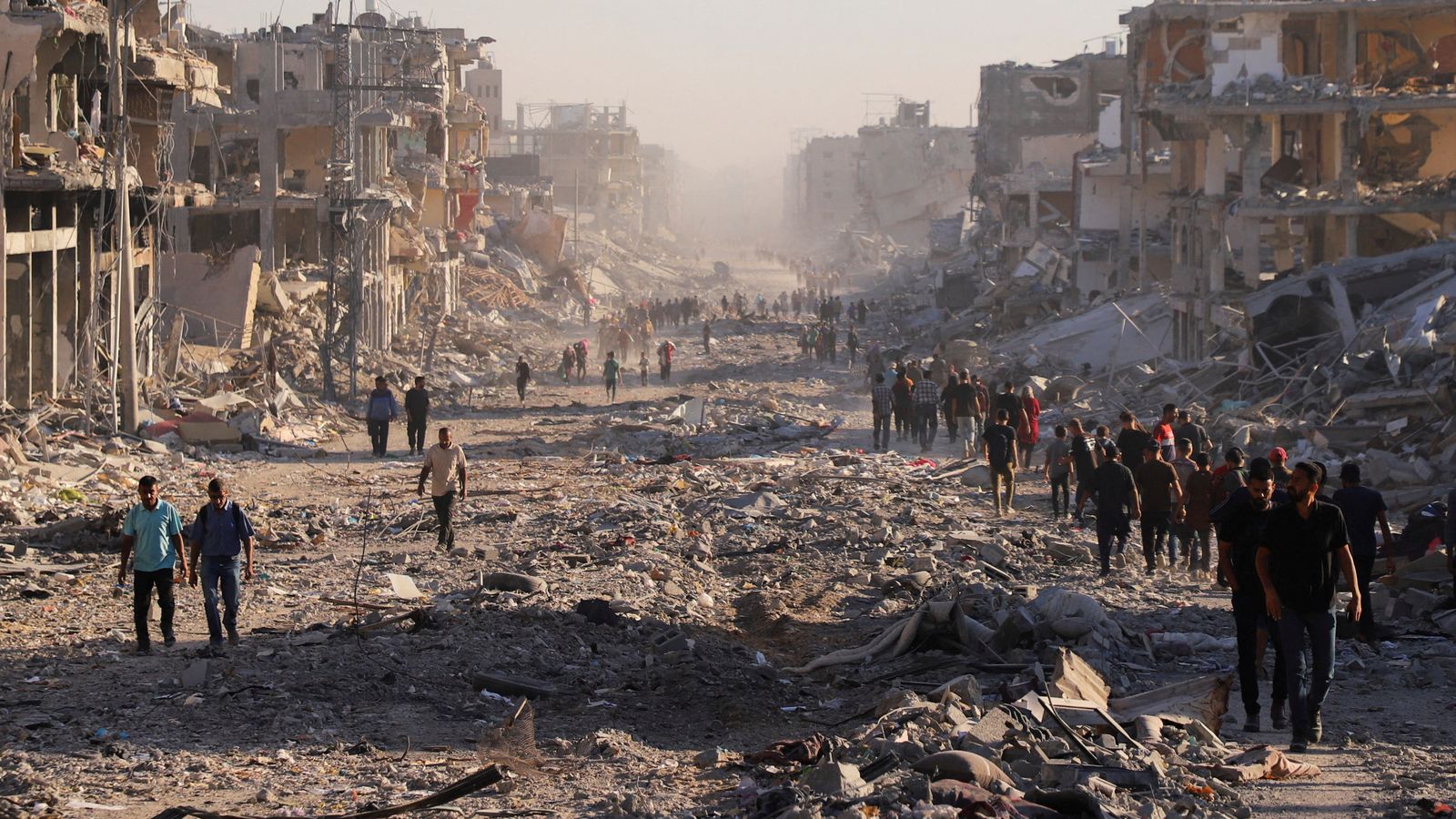
The United Nations has condemned airdrops on Gaza, warning they risk killing the starving Palestinians they are intended to help.
Jordan, the United Arab Emirates, and Israel parachuted aid packages into the territory for the first time in months at the weekend amid claims a third of the population has not eaten for days.
But Philippe Lazzarini, commissioner-general for the UN Relief and Work Agency for Palestinian Refugees (UNRWA), has said they “will not reverse the deepening starvation” and often do more harm than good.
‘Make or break’ as starvation looms; Middle East latest
“They are expensive, inefficient & can even kill starving civilians,” he wrote in a statement on X.
What is an airdrop – and why are they dangerous?
There are several ways humanitarian agencies and international allies can deliver aid to regions in need – by land, by sea, or by air.
While parachuting in supply packages from planes may look impressive, airdrops are “fraught with problems”, Sky correspondent in Jordan Sally Lockwood says, and often used as a “desperate last resort”.
“Foreign nations know airdrops are a deeply flawed way of delivering aid,” she says.
“Palestinian sources tell us the aid that’s been dropped so far is not reaching the most vulnerable. They are an attempt to get something to a few – often viewed as a desperate last resort. Gaza is at that point.”
Read more
Israel announces ‘tactical pause’ in fighting
Eyewitness: Aid is sitting idle in Gaza
Military analyst Sean Bell says that delivering aid by air is ideally done when planes can land on a runway – but Gaza’s only landing strip in Rafah was shut down in 2021.
The alternative is “very dangerous”, he warns. “Aircraft flying relatively low and slow over a warzone isn’t very clever. When these parcels hit the ground, there’s a significant danger of them hitting people.”
Crucially, they can only deliver a fraction of what lorries can.
“The really big issue is aircraft can only deliver one truckload of aid. Gaza needs 500 truckloads a day, so it’s 0.2% of the daily need,” Bell adds.
They also risk falling into the wrong hands and ending up on the black market.
“Some of it has been looted by gangs and is on the black market already,” Lockwood says.
Why are they happening now?
Israel cut off all supplies to Gaza at the beginning of March, reopening some aid centres in May, but with restrictions they said were designed to stop goods being stolen by Hamas militants.
Israeli authorities control the only three border crossings to the strip: Kerem Shalom in the south, Crossing 147 in the centre, and Erez to the north.
Since the current conflict with Hamas began in October 2023, humanitarian agencies and world leaders have repeatedly accused Israel of not allowing enough deliveries through.
Mr Lazzarini says the UN has “the equivalent of 6,000 trucks” in neighbouring Jordan and Egypt “waiting for the green light to get into Gaza”.
Israel says it has commissioned a “one-week scale-up of aid”, having conducted its own airdrops on Saturday.
In a statement over the weekend, the Israeli Defence Forces said it will work with the UN and other aid organisations to ensure aid is delivered but no more details were given.
Meanwhile on Sunday, it began daily 10-hour pauses in fighting in three areas of Gaza to address the deteriorating humanitarian situation.
According to the Hamas-run health ministry, 133 Palestinians had died of malnutrition by then, including 87 children.
Doctors Without Borders warned on Friday that 25% of young children and pregnant women in Gaza are malnourished.
Israel says there is no famine in Gaza.
What are in the airdrops and who is behind them?
Air packages are largely being delivered by C-130 planes. Jordan is reported to be using 10 and the UAE eight.
They can carry eight pallets of goods each, weighing around eight tonnes in total, according to Lockwood, who is on the runway at Jordan’s King Abdullah II airbase.
There are no medical supplies in the packages, she says, only dried food, rice, flour, and baby formula.
Prime Minister Sir Keir Starmer has said the UK will help with airdrops – but no British aircraft have been seen in Jordan so far.
He will discuss the matter with US President Donald Trump during talks in Scotland on Monday.
The RAF delivered 110 tonnes of aid across 10 drops last year as part of a Jordanian-led international coalition – but it is not clear what level of support will be offered this time.

















